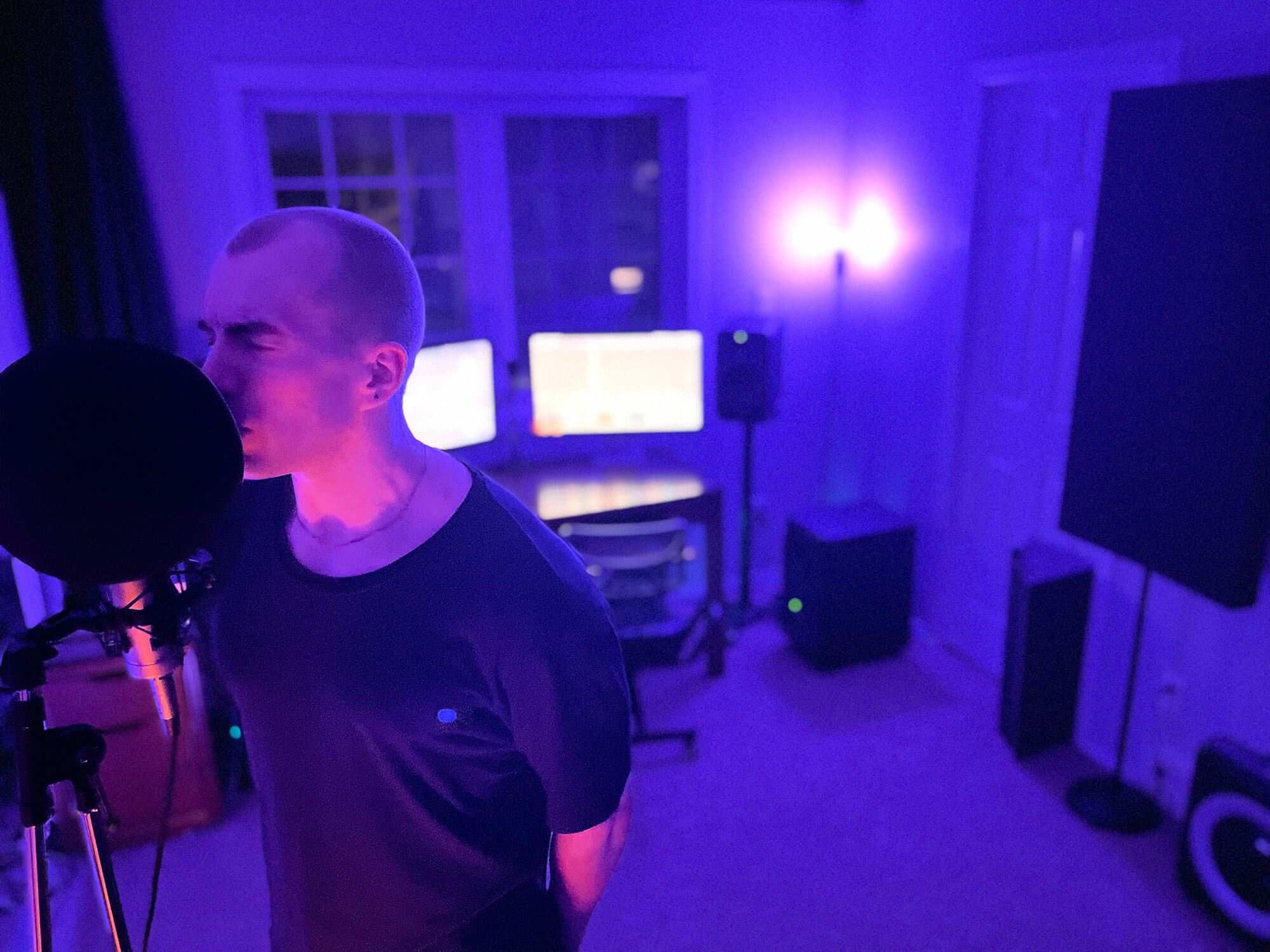
Show Off Your Studio: Warping the human voice with Factor Eight
Using just his voice and a handful of equipment, Factor Eight has created a raw, unfiltered album that explores what it’s like to live with Bipolar Disorder.
Factor Eight is a Canadian producer who specialises in crafting songs pretty much just using his voice. II is his first foray into this signature vocal-led process, and has become a chance for the artist to learn more about himself as an artist and a person.
In this album, Factor Eight’s refined voice creates atmospheres through speech, singing and percussive noises. The rawness of the human voice reflects the honest themes behind the album – coping with the damaging effects of Bipolar Disorder, which he suffers from. Factor Eight is also donating the proceeds from the streaming and sales to organisations supporting mental health awareness and anti-stigma.
We find out about the process behind contorting vocals in such a way and how his ideas are taken from concept to finished product.
How does bipolar disorder impact your work?
Those who struggle with mental illness like bipolar are often more sensitive individuals. Speaking personally, I can at times feel emotions with heightened intensity. Creating music is a way for me to cope with these uncomfortable feelings, and channel them from within me into art.
The human voice is such a diverse instrument and you use it brilliantly. What first drew you to centring around the voice in your work?
I felt inspired to create something that was entirely my own, not trying to resemble any artist or genre in particular, but instead letting the sounds in my head translate in as raw and unfiltered a way as possible. I started experimenting with manipulating recordings of my voice, and found that this was a very personal and organic way to express myself authentically. I continue to find new and exciting ways to manipulate the voice in my work.
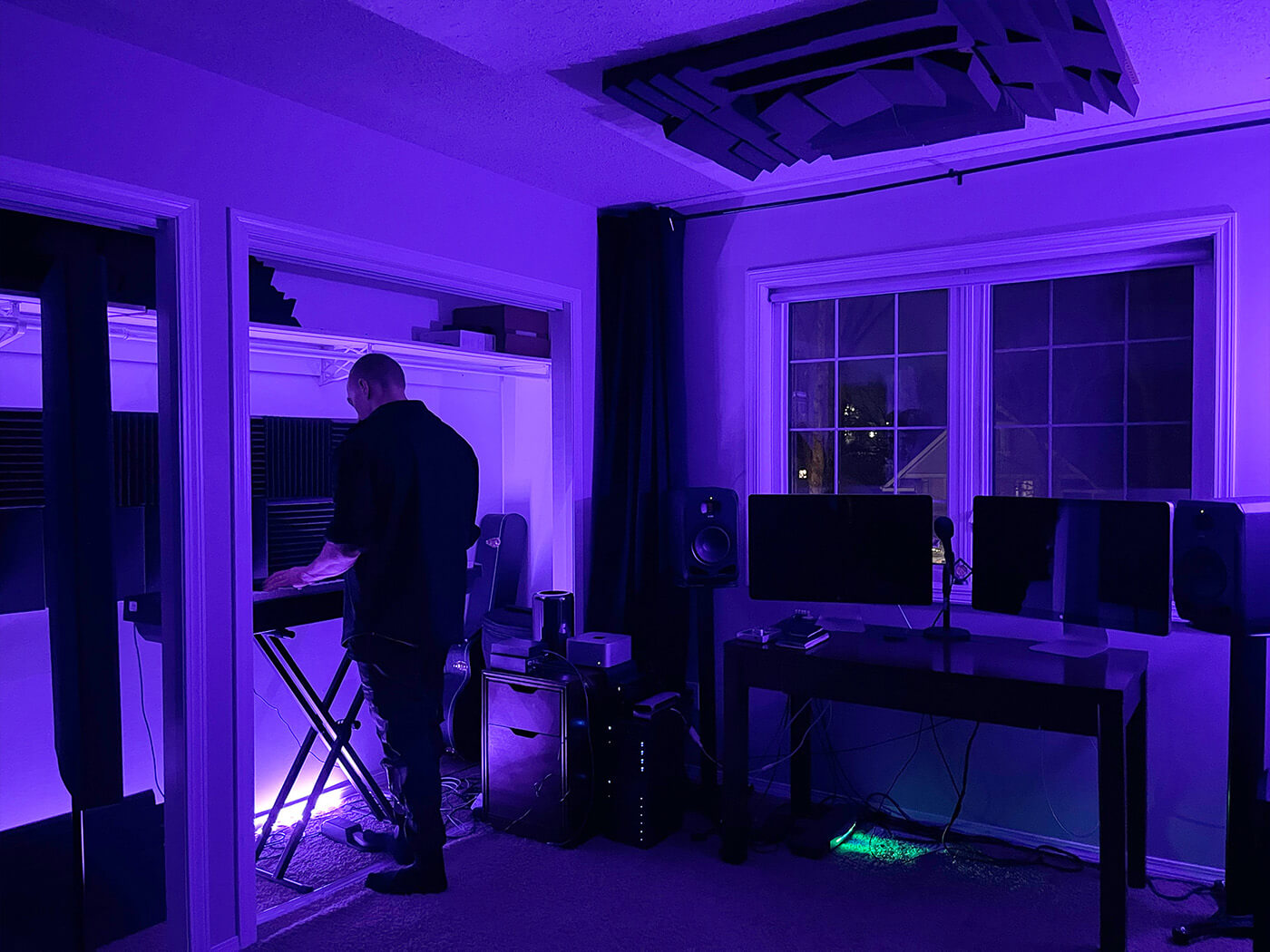
Tell us a bit about the studio.
My studio is located at my home in Saskatoon, SK, Canada. I’ve been living here since July of 2019, but recently moved my studio into the room in the house with the most natural light. Creating a space that vibes with your energy is of paramount importance.
I try to create a workflow around as minimal an amount of gear as possible. This allows me to transition to remote work more seamlessly, and also makes moving a less cumbersome process. My sound relies primarily on digital work, so I have limited needs for physical gear in my space. Instead, the purpose of my studio is catered toward creating an environment that is conducive to comfort and creativity for both myself and guests.
How do you use your studio?
I construct entire tracks exclusively by contorting recordings of my voice. I mostly begin by making vocal sounds (singing, humming, beatboxing, etc) into either my SM58 or Tube condenser mic. The tube mic is at the back of the space, whereas the SM58 is on my desk. If I want to put down an idea very quickly in the midst of a creative flow, I will use the SM58. Depending on how showcased the raw take of the vocal is, I find the quality of the microphone doesn’t carry that much weight into the quality of the final track, with my work.
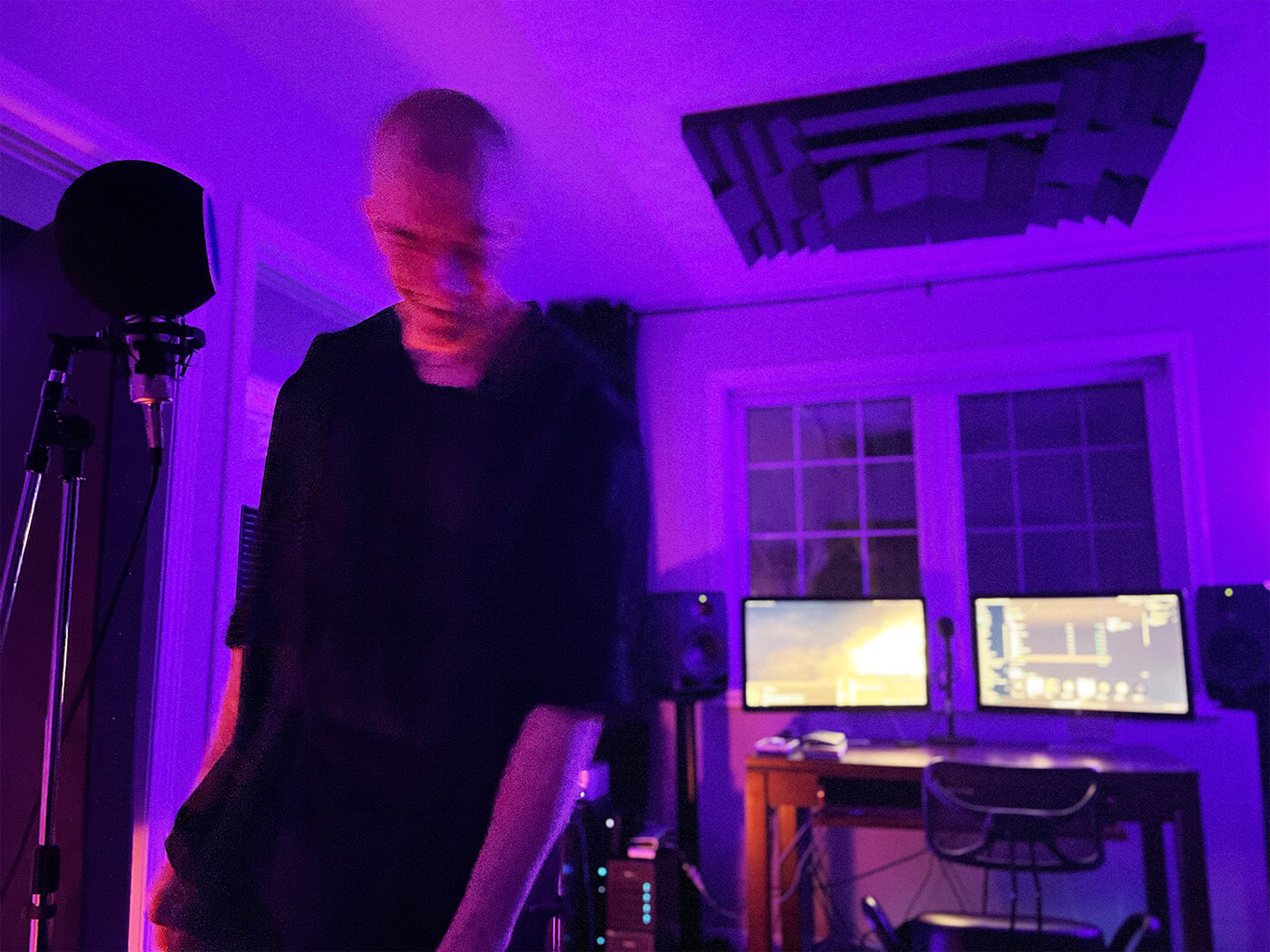
What atmosphere do you try and create in the studio and how does the studio environment help you with your creativity?
My goals are to translate the sounds in my head into sounds from a speaker in as direct a means as possible. I have gravitated toward using my voice to derive all sounds in a track, as this is the most personal and unique sound that I can create. Using my own voice as the basis for my music inherently makes the process feel more raw and expressive. As I speak about my experiences with bipolar disorder and mental illness through my music, this concept acts as a parallel between my personal and artistic voices.
Which DAW do you use?
I use Ableton Live. Ableton’s audio warping functionality is, as far as I know, unrivalled in the process to manipulate audio. With it also being built right in to the functionality of the DAW, the process is quite seamless, and arguably easier on the CPU than a plug-in might be. Ableton’s audio warping algorithms have played a pivotal role in the make-up of my current sound as an artist, and the process constructing entire tracks around my voice alone.
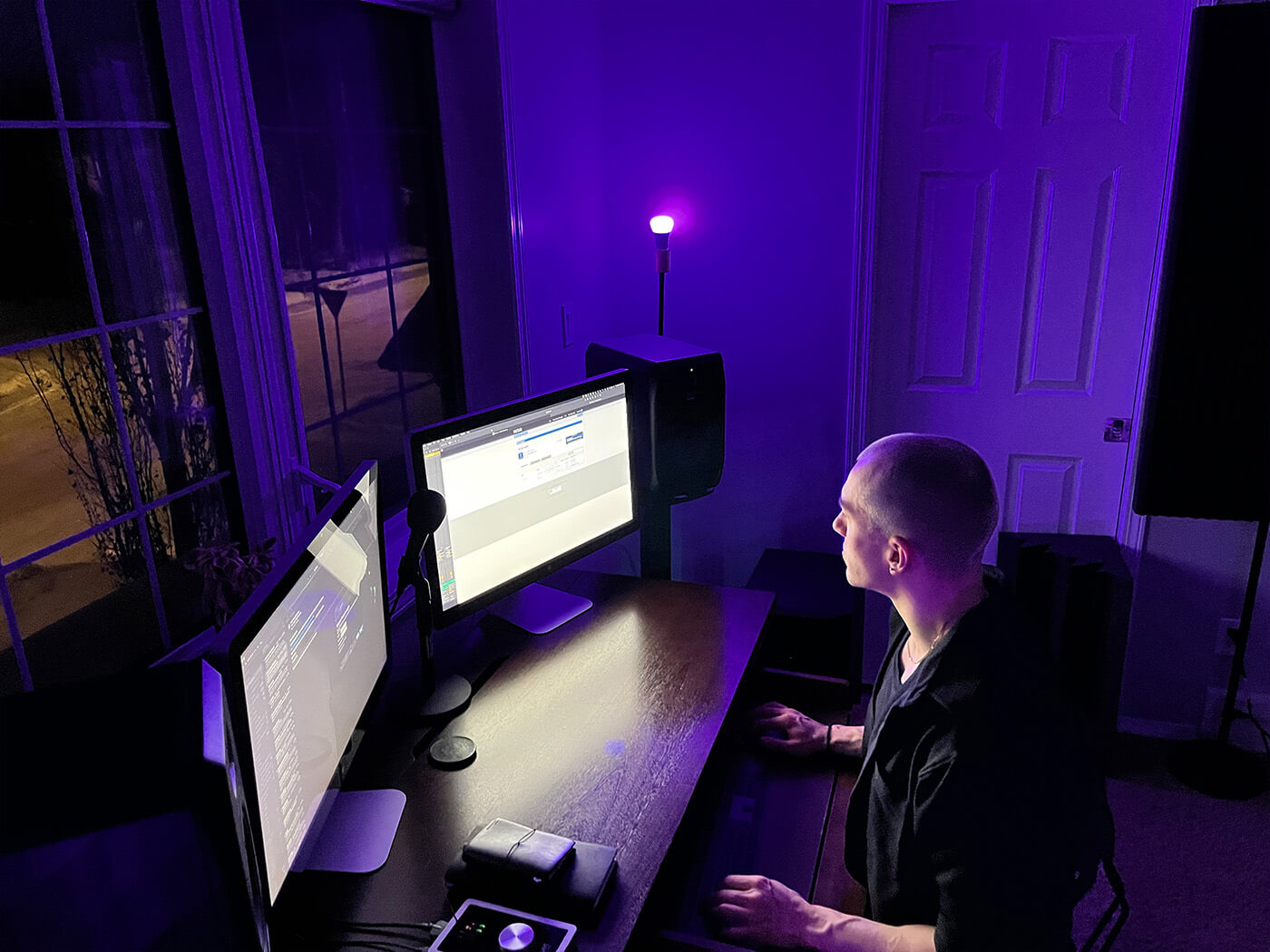
What is your favourite piece of gear?
I quite like my Tube condenser microphone with the Kaotica Eyeball. It allows for me to record clean vocal takes without the need or space for a vocal booth. This contributes to having a high quality vocal recording to start from in my “voice” tracks, especially when looking to showcase the vocal in a more raw, dry, and forward manner.
What synth or effect can be heard the most on II?
Ableton’s audio warping would definitely be the most common effect used and heard throughout the record. When stretching and pitching audio to an extreme degree, there are sonic artefacts that result from the various algorithms Ableton works in. Producers often try to mask these artefacts, or warp the audio in such a way that limits their presence. Instead, I tried (and continue to try) to let the artefacts sound how they naturally are, working around the sonic character of the algorithms, rather than trying to fit them into a preconceived vision of how something should sound.
Do you have a corner of the room dedicated to vocals? Is there a booth? What microphone do you use?
The back corner of the room is where my tubes condenser mic is located. With the Kaotica eyeball, I have found no need for a vocal booth. With a quiet, well acoustically treated room, I have been able to achieve some great results with this set up for the last 8-9 years.
Can you give us three main techniques you have used to contort vocals on the album? Are there elements made using your voice, such as drums, that are quite unexpected?
Ableton’s audio warping would be one of the primary methods I use to contort vocals. I also like to experiment with manipulating delays to create rhythms and unique textures. Without revealing too much of the process I have developed over the years, bouncing audio once you’ve achieved something cool is an undervalued technique.
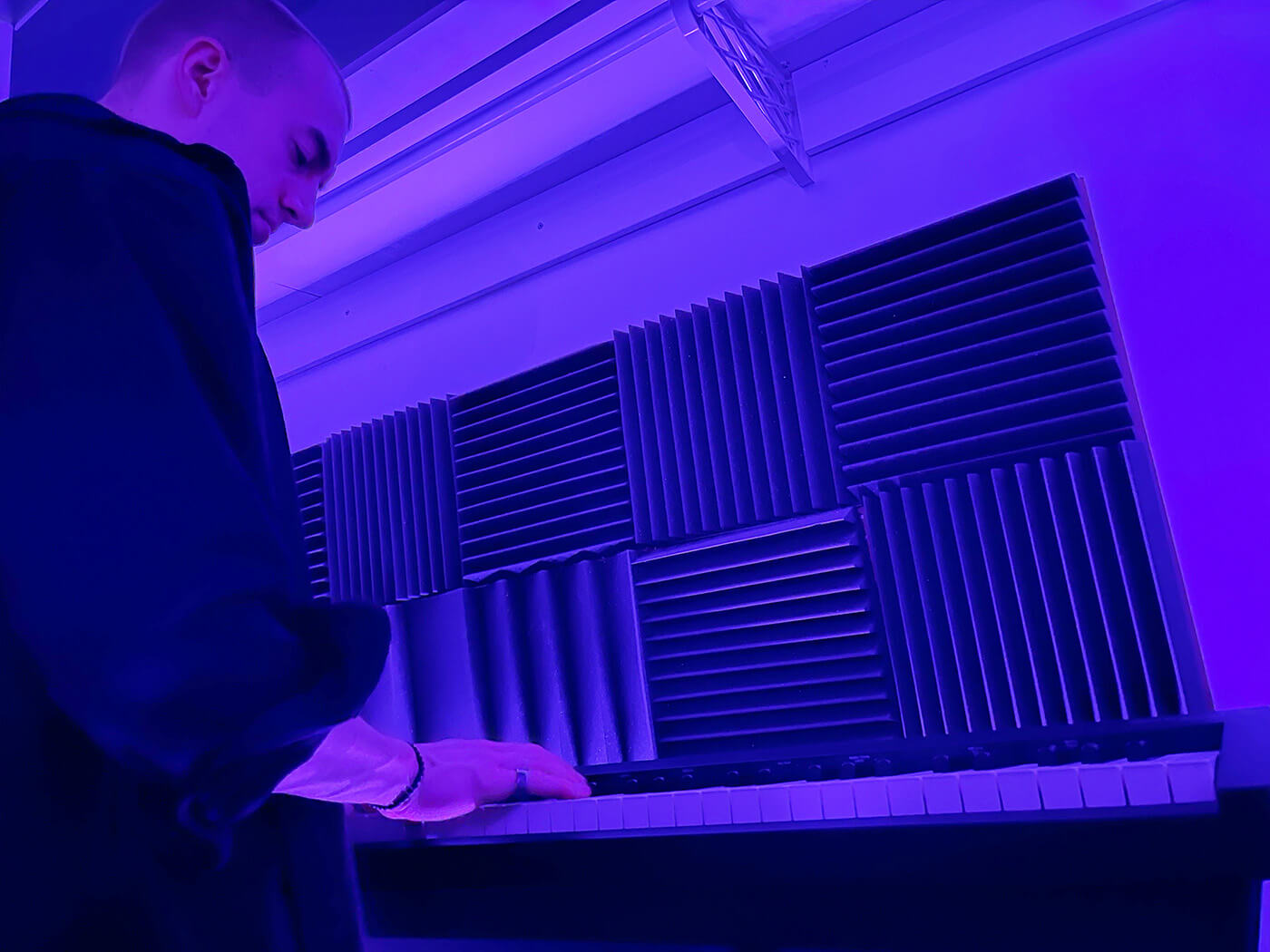
What’s been the biggest investment in your studio? Was it worth it?
Up until a couple of weeks ago, my answer would have been my 2013 Mac Pro that lasted me nine years. However, with support from Sask Arts, I just upgraded to a Mac Studio. My process relies heavily on work within the computer itself, digitally contorting and layering audio. At times, this can be seriously demanding of the CPU. Bar none, the best investment I have made in my studio has always been having a highly capable computer. With my computer being my primary musical instrument, the more capable the computer is, the more it becomes a lens or medium through which I express, rather than a limitation or constraint.
What is next on your shopping list studio-wise?
The next thing I will likely be purchasing for my studio are centre and rear channel speakers to mix for 5.1 surround and Atmos systems. I have been continuously more involved in music and sound for visual media over the last 9 years. With the projects I am working on increasing in their scale, mixing for 5.1 will soon be a wise capability to equip myself with.
What is your dream piece of gear?
I am currently in love with my Adam Audio S2V’s. I started off with their A7Xs and upgraded about 4 years ago. Adam creates incredible speakers, and my dream would be to have a studio with the most prestigious speakers they’ve created.
I would also love to have a piano. I truly miss being able to sit down at a real piano and just play. While I do feel that the sound I’ve created in the digital realm of music is in line with who I am as an artist today, there is something about being present with a physical instrument, and simply playing, that will never be recreated by a digital interface.
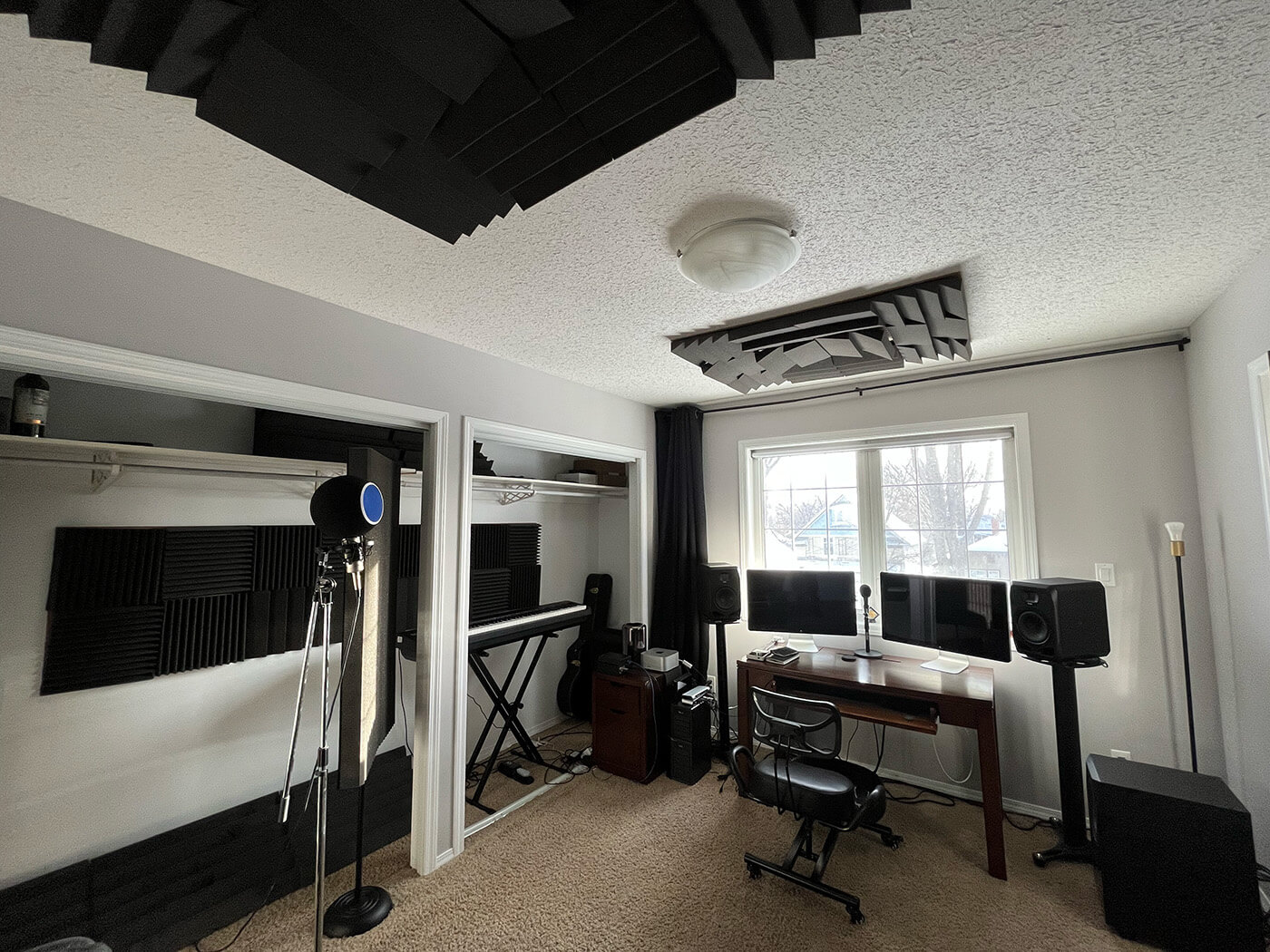
If you were left on a desert island, what one item would you take with you to make music with forever?
I would bring my Vitamix. A large part of being able to create music, or do anything creative, is having the mental energy to do so. For this, proper nutrition is key. I sometimes go days without ever actually properly preparing food for myself, relying exclusively on creating smoothies with the nutrients I need to consume for the day. My Vitamix is vital to my having the nutritional health, mental and creative energy needed to create music.
What is your top piece of production advice?
Trust your voice. While we do need to seek advice from others (especially at the beginning of the learning process) finding and establishing a sound that is truly unique and in line with who you are is paramount. Perhaps this means first discovering who that person is, at your core, but often times I think the discovery of our personal and artistic voices can happen in tandem. It did (and continues to) for me.
Also, you have to do what you enjoy. Sometimes, what one enjoys to listen to and enjoys to create are different things.
On a related note, you must be detached from the outcome and enjoy the process. Making music is complex. If someone does not enjoy the process, I would suggest either trying a different means to create music, or exploring another avenue of creativity.
These are the only ways that one will persevere through what is a challenging and perhaps never-ending learning curve.
What is the one piece of advice you would give someone starting out building a studio?
Don’t simply create a studio. Create your space — a temple of creativity & extension of your identity.
Also, if you can, do not use your studio space for anything other than creating. There are psychological reasons for this that I am not qualified to explain, but having a dedicated space for a specific use is important. Also, YouTube and Reddit are your friends.
Find out more about Factor Eight here.